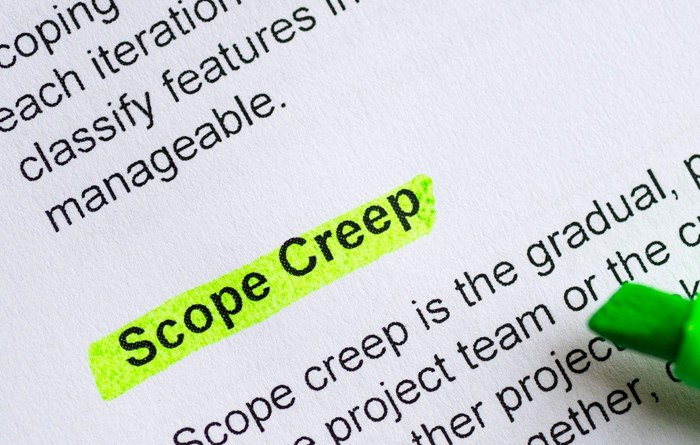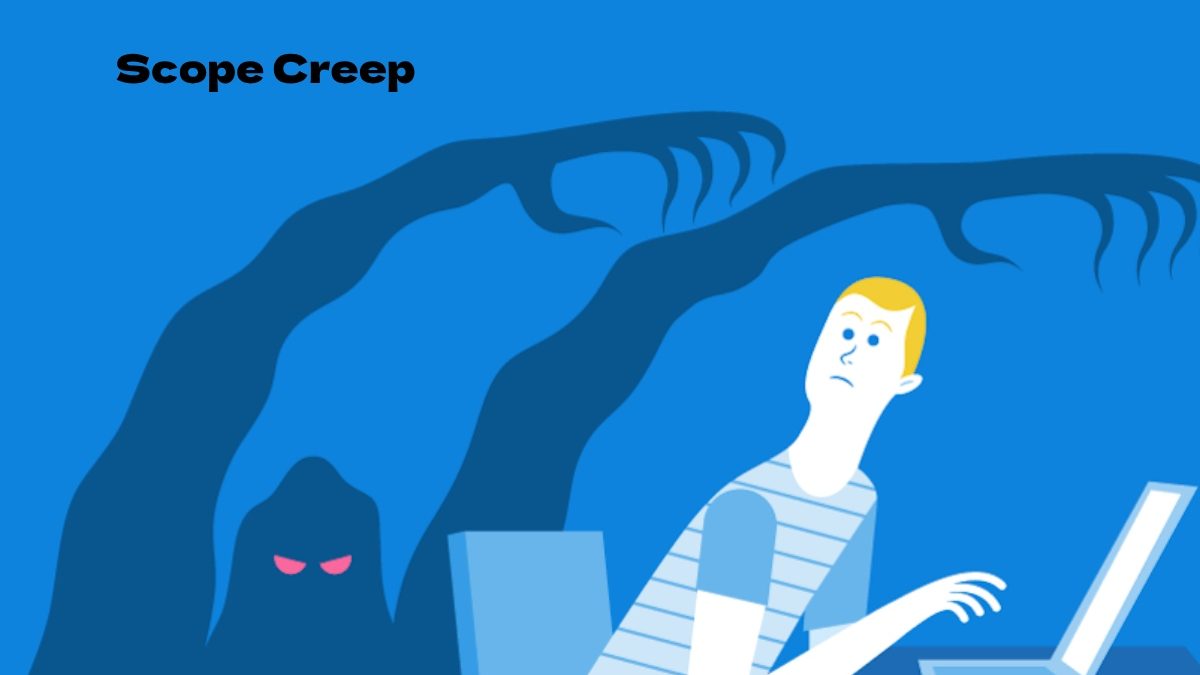Scope Creep Definition: Scope creep is the uncontrolled and steady extension of a project’s requirements, deliverables, or objectives beyond the originally agreed-upon scope. It happens when constant additions, alterations, or upgrades to the project scope are not adequately evaluated in terms of time, resources, and budget.
Scope creep frequently results from changing client demands, fuzzy project specifications, ineffective project management, inadequate stakeholder communication, or a failure to identify and maintain project boundaries. Good effects could include project delays, higher expenses, lower quality, and strained connections with clients or stakeholders.

Establishing a precise and well-defined project scope at the start of the project is critical to avoid scope creep. Define project objectives, deliverables, timetables, and limits. To minimize the effects of scope creep, regular communication with stakeholders, monitoring change requests through a structured procedure, and completing impact assessments before approving scope modifications are required.
Scope creep can be quickly detected and addressed through practical project management approaches, such as regular monitoring and tracking of project progress, detailed risk assessments, and upholding open lines of communication.
Table of Contents
What Causes Scope Creep
Lack Of Clarity Or Poorly Defined Requirements
The scope needs to be clear and detailed from the start. However, you can only create the project scope statement after defining the requirements for the project.
If you haven’t thoroughly researched the requirements yet, the scope will base on assumptions and vague ideas rather than the needs of the stakeholders, which invariably encourages scope drift. So don’t be surprised if clients, executives, managers, and even some team members start to define the project however they want.
Changes In Client Or Stakeholder Needs
As a project continues, client or stakeholder needs may change or evolve. It may require new features or functions or further work.
Ineffective Communication
Once you’ve defined the scope of your project, you also need to share it. If you don’t do this effectively and early on in the project, participants won’t know your limits. If, after you have taken the time to create the project scope, everyone is unaware of its existence, there may still be a lack of alignment, or the project may even end up going down the drain.
Include the scope in all preliminary project documents, such as the plan or brief. That way, everyone will have access to the project scope statement, making it possible to clear up any misalignments before the project starts.
Stakeholder Management Needs Improvement
Poor stakeholder management can lead to scope creep. Stakeholder expectations might not match the project’s intended scope if there is a lack of communication, input, or interaction with them. It could result in demands for additional features or revisions.
Unrealistic Timelines or Resource Constraints
When projects give ambitious deadlines or limited resources, there may be a temptation to cut corners or compromise. It might lead to scope alterations or additions to meet unreasonable expectations, contributing to scope creep.
Document Project Planning
Project management requires documenting planning, objectives, and mechanisms to achieve goals. This documentation serves as a backup, clarifies the project scope, and allows for consultation when needed. Discussing important points with stakeholders and avoiding changes as the project progresses is crucial. Once the document is complete, sharing the planning with all involved parties is essential.
Create A Timetable For Completing The Project
A project scope calendar is crucial for defining important dates and responsibilities for project members. It helps avoid Scope Creep by defining important dates and assigning specific responsibilities. Companies can use tools like Gantt charts to measure employee progress and anticipate contingencies within the calendar. By collaborating with project team members, companies can effectively manage their project’s timeline and ensure successful completion.
Establish Mechanisms To Control Changes.
Scope Creep refers to unexpected changes that alter a project’s scope, requiring mechanisms to control these changes. Must make A written request to make a change, and a person must approve or reject the bid. While anyone can propose improvements, only one person can determine the most convenient option. Despite being a strict measure, avoiding Scope Creep is crucial for ensuring a smooth project development process.
Discuss The Project Scope With Stakeholders
Effective communication and stakeholder participation in project scope definition can prevent unexpected changes and align work teams effectively. Talking with investors, clients, and collaborators helps plan the project effectively, while early analysis helps avoid Scope Creep. Involving work teams in the project ensures they fulfill their responsibilities and commit to preventing issues like Scope Creep.
Tools To Prevent Scope Creep
You’ve already come a long way to understanding Scope Creep. However, you must still understand the requires for excellent project management and avoid Scope Creep.
First and foremost, keeping the team informed and focused on the goals is critical. Here are some examples of applications you can use to accomplish this:
Asana
Sales and accounting teams, for example, can be formed. Asana offers a progress meter that allows you to keep track of what your work teams are up to and where the project is at.
Rebooth
This collaborative work software allows assigned tasks to have their own space, allowing collaborators to interact. It includes tools for managing video calls and a task search engine, resembling a social network for collaborators.
Trello
It is one of the most widely used project management and collaboration applications. Trello lets you customize boards, attach files from the cloud, is Slack compatible, and has a mobile app.
Project. Co
This application optimizes customer communication, addressing Scope Creep’s lack of understanding. It helps clients stay informed about project progress and ensures they know all project activities.
Toggl Plan
The best software enables assigning and viewing pending tasks, enabling project progress measurement. It is compatible with Slack, Evernote, and Github.
Conclusion
Scope creep is a common problem that can derail even the most well-planned projects. It occurs when the project’s scope expands beyond its original goals and objectives, leading to delays, budget overruns, and frustration for everyone involved. In this guide, we’ll explore the causes of scope creep and provide tips on how to avoid it.


